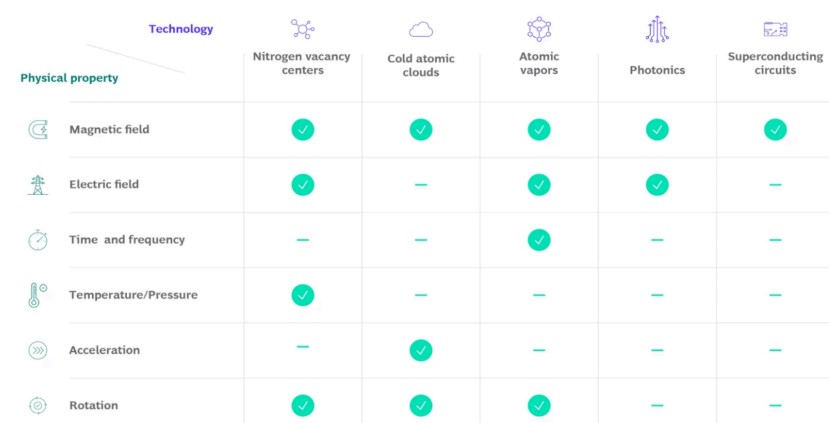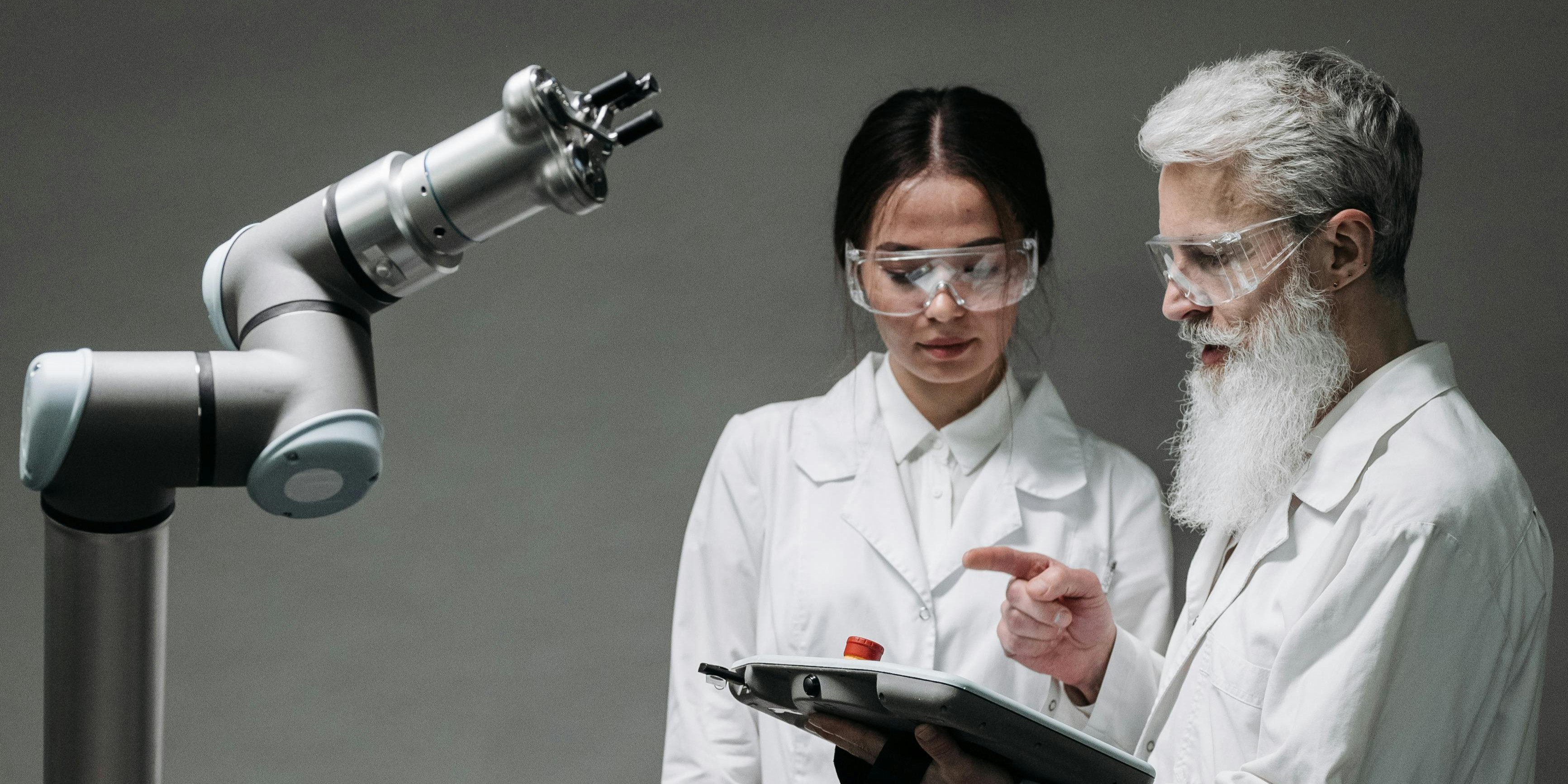Quantum Computing is in the buzz. The phenomena defying the laws of physics (well the ones that most of us know) are fascinating and intriguing, aren’t they ? While Quantum Computing (QC) tends to grab the headlines, Quantum Sensing (QS). is an equally fascinating area. Moreover, it has significant business potential also, as seen in the chart below.

Quantum Sensing is the one we might have the most “real-world” experience with already, even if we don’t realize it. Lets take a look.
What exactly is Quantum Sensing (QS)?
Think of sensors as devices that measure physical properties – temperature, pressure, magnetic fields, gravity, and so on. Classical sensors have been around forever and are used in everything from your car’s engine to medical equipment.
Quantum Sensing (QS) is the next generation of these sensors. It leverages the strange and powerful rules of quantum mechanics to provide measurements that are orders of magnitude more sensitive and precise than what classical sensors can achieve. It’s essentially applying quantum metrology – the science of super-accurate measurements – in practical settings, turning those precise techniques into instruments you can use “in the field”.
Quantum Sensing (QS) is a field that develops sensors leveraging quantum mechanics for measurements of physical properties with extreme sensitivity and precision. It’s applying precise quantum metrology techniques in practical instruments.
There are different categories and specific technologies being explored and developed within Quantum Sensing. Here are some common ones mentioned in the sources:
- Quantum Electromagnetic Sensors (QES): These devices measure electromagnetic fields dynamically and with high precision. They rely on technologies such as NV (nitrogen vacancy) centers, atomic vapors, and superconducting circuits.
- Quantum Imaging: This technology uses quantum mechanics to improve imaging resolution and range. Examples include quantum lidar for precise 3D maps and quantum radar for enhanced object detection.
- Quantum Gravimeters: These are sensors designed to measure gravity. Quantum gravity sensors can provide state-of-the-art performance for applications like climate research and civil engineering.
- Quantum Thermometers and Barometers: These devices are used to accurately evaluate temperature and atmospheric pressure. They utilize technologies such as cold atomic clouds and superconducting quantum interference devices (SQUIDs).
- Nitrogen-Vacancy (NV) Centers: This is a specific technology, often based on diamond nitrogen-vacancy centers, used in Quantum Electromagnetic Sensors. Research continues to develop new techniques based on NV centers to improve the sensitivity of quantum sensors.
- Optically Pumped Magnetometers (OPMs): These are integrated sensors, like those being developed for biomagnetic applications. Their sensitivity can match that of SQUID devices but notably do not require cryogenic temperatures for operation.
- Trapped-ion qubits: These are a type of qubit technology utilized in QS hardware. They can measure physical properties such as time, rotation, and electric-field force.
- Photonic qubits: Another qubit technology used in QS hardware, they transmit information as optical signals. These can be used to measure properties like temperature and mechanical position.
These represent various approaches and the underlying physics or components used to achieve the enhanced sensitivity and precision characteristic of Quantum Sensing.
But are such super-accurate measurements any useful ?
Real world applications of Quantum Sensing
While QC is still largely in development for widespread commercial use, we’ve actually been using early forms of quantum sensors for decades. Devices like microwave atomic clocks and superconducting quantum interference devices (SQUIDs) are considered the first generation of quantum sensors. Ever had an MRI (magnetic resonance imaging)? That medical imaging machine uses quantum sensors.

But the real excitement is around the emerging second generation of QS technologies. Prototypes for many new applications are starting to appear.
Here are some of the current and emerging applications:
- Navigation: Highly precise atomic clocks are crucial for accurate GPS systems. Newer QS could even enable navigation indoors or underground where GPS signals can’t reach.
- Medical & Bioimaging: This is a promising area. Applications include scanning the brain, imaging the structures of proteins, and even monitoring real-time metabolic processes in the body. Researchers are developing new types of sensors for biomagnetic applications that don’t require extremely cold temperatures like older technology.
- Environmental Monitoring: Quantum sensors could help predict natural events like volcano outbursts by detecting subtle changes. They can also be integrated into smart buildings to track and optimize energy consumption.
- Industry & Calibration: Quantum sensors can be used as signal receivers and amplifiers for radar communication. They are also vital for calibrating electrical standards needed for new technologies like 5G and 6G mobile networks. They can image molecular structures (spectroscopy) and could be useful in industries like chemicals, pharmaceuticals, and sustainable energy.
- Defense: This sector has been a key driver for QS development, with many use cases being prototyped and tested for military purposes due to their strategic needs and lower price sensitivity.
With such wonderful possibilities, its no wonder that QS is catching attention. Besides, there are other reasons for it.
Quantum Sensing is gaining momentum
Beyond the incredible sensitivity and precision, Quantum Sensing offers advantages like potentially smaller sized devices in the future. The defense industry has been the main driver so far, but research is fueling new use cases across various sectors like healthcare, semiconductors, and satellites.
While integrating QS can have challenges, such as needing further miniaturization or facing complex manufacturing processes, there’s clear momentum. Startups are raising significant investments – $2 billion in 2022 alone – and patent applications have accelerated rapidly in recent years. Many companies are now exploring QS use cases and forming partnerships.

Interested in this growing field ? Have a look at what your enterprise can do today to make the maximum use of the upcoming opportunities.
The need to prepare your Enterprise for the Quantum Sensing future
Quantum Sensing applications won’t just “plug and play”. Companies interested in leveraging this technology will need to build internal expertise and form partnerships with established quantum companies. Starting early gives businesses a significant head start in securing talent and alliances.
Quantum Sensing is a powerful technology with the potential to revolutionize measurement across numerous fields. While less talked about than Quantum Computing, its practical applications are closer than many might think.
What do you think are the most exciting potential applications of Quantum Sensing? Share your thoughts in the comments below!
We offer a range of marketing and branding services, led by top professionals who have decades of experience. To know more about how we can take your organization to a higher orbit, visit Our Services Page or drop in an email to connect.)
FAQs
Quantum Sensing (QS) is a field that uses the principles of quantum mechanics for measurements. It’s essentially taking the science of super-accurate measurement and turning it into practical sensing tools.
Quantum sensors are incredibly more sensitive and precise than classical ones. This enhanced capability allows us to measure physical properties with unprecedented accuracy, enabling new applications.
Early forms are already in use in medical imaging like MRI, and precise GPS navigation relies on related tech. Exciting emerging applications include advanced bioimaging, navigation indoors, and environmental monitoring.
Quantum Sensing can provide state-of-the-art measurements for things like time, temperature, pressure, rotation, and magnetic and electric fields. It can even be used for precise imaging down to molecular structures.
While some components are mature, many advanced quantum sensors are still in the prototype phase. We’re starting to see niche and defense applications emerge, with more commercial realities expected in the next few years.
